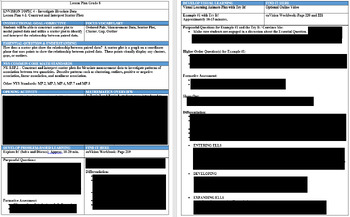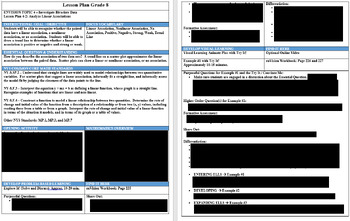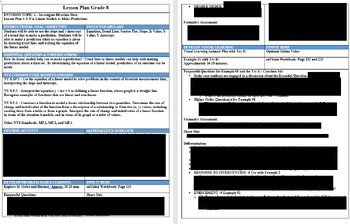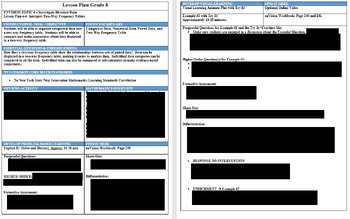8th Grade enVision Lesson Plans MATH Topic 4 - Investigate Bivariate Data BUNDLE
- Zip
Products in this Bundle (5)
Also included in
- This BUNDLE includes 52 LESSON PLANS!This is for the ENTIRE 8th GRADE enVision CURRICULUM!All lesson plans are EXTREMELY DETAILED and directly connect to the enVision Math Curriculum for 8th grade. These are JUST THE LESSON PLAN DOCUMENTS, NOT the actual activities or assessment tools. The lessoPrice $467.53Original Price $519.48Save $51.95
Description
This BUNDLE includes FIVE LESSON PLANS. All lesson plans are EXTREMELY DETAILED and directly connects to the enVision Math Curriculum for 8th grade.
These are JUST THE LESSON PLAN DOCUMENTS, NOT the actual activities or assessment tools.
The lessons included in this bundle are for Topic 4 - Investigate Bivariate Data. The lesson titles are as follows:
Lesson 4-1: Construct and Interpret Scatter Plots
Lesson 4-2: Analyze Linear Associations
Lesson 4-3: Use Linear Models to Make Predictions
Lesson 4-4: Interpret Two-Way Frequency Tables
Lesson 4-5: Interpret Two-Way Relative Frequency Tables
Each lesson plan is 4 pages long and includes the following categories:
- enVision Topic
- Next Generation / Common Core Standards
- Instructional Goals
- Essential Question
- Vocabulary
- Supplementary Materials
- Develop Problem Based Learning - Solve & Discuss It
- Practice and Application Activities
- Scaffolds / Differentiation / Questioning
- Developing Visual Learning with Examples and Videos
- Practice and Application
-Item Skills Analysis
- Special Education Component
- English Language Learner Component
- SEL Component
- Review, Assessment, and Extension
- Teacher Lesson Reflection Questions
These are JUST THE LESSON PLAN DOCUMENTS, NOT the actual activities or assessment tools.
**PLEASE REMEMBER TO LEAVE A REVIEW :)
***TPT will give you "credits" for every review that you leave!!
****Thank you so much in advance!!






